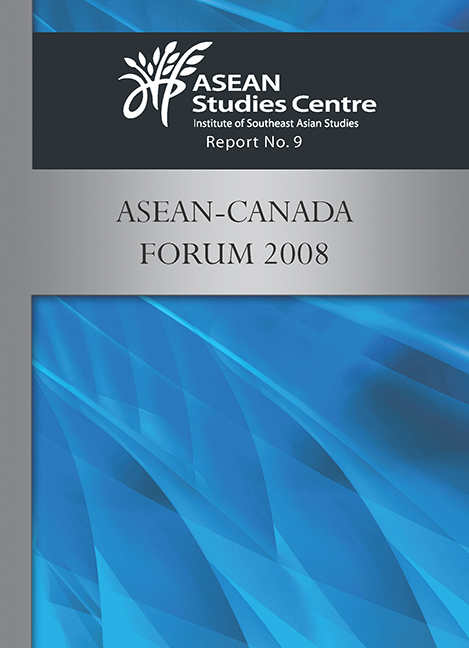Book contents
- Frontmatter
- Dedication
- Contents
- Introduction
- I Regional Economic Integration: ASEAN and Canadian Perspectives
- II Background Papers
- 1 AFTA–NAFTA: Trade and Investment Issues
- 2 Trade and Investment Issues in ASEAN Economic Integration
- 3 Institutional Development in ASEAN
- 4 Governance Issues in NAFTA
- 5 Different Approaches to Dispute Resolution under ASEAN
- 6 Dispute Resolution under NAFTA: Evolution and Stagnation
- 7 Winners and Losers in ASEAN Economic Integration: A Perspective from Vietnam
- 8 Winners and Losers in International Economic Integration: The Distributional Effects of NAFTA
- 9 Cross-border Labour Migration in ASEAN: Issues and Challenges
- 10 Labour Market Integration within NAFTA
- Annex I: Programme of the Forum
- Annex II: List of Participants
- Annex III: Rules-based Governance
1 - AFTA–NAFTA: Trade and Investment Issues
from II - Background Papers
Published online by Cambridge University Press: 21 October 2015
- Frontmatter
- Dedication
- Contents
- Introduction
- I Regional Economic Integration: ASEAN and Canadian Perspectives
- II Background Papers
- 1 AFTA–NAFTA: Trade and Investment Issues
- 2 Trade and Investment Issues in ASEAN Economic Integration
- 3 Institutional Development in ASEAN
- 4 Governance Issues in NAFTA
- 5 Different Approaches to Dispute Resolution under ASEAN
- 6 Dispute Resolution under NAFTA: Evolution and Stagnation
- 7 Winners and Losers in ASEAN Economic Integration: A Perspective from Vietnam
- 8 Winners and Losers in International Economic Integration: The Distributional Effects of NAFTA
- 9 Cross-border Labour Migration in ASEAN: Issues and Challenges
- 10 Labour Market Integration within NAFTA
- Annex I: Programme of the Forum
- Annex II: List of Participants
- Annex III: Rules-based Governance
Summary
1. Introduction
This paper discusses and compares both the trade and investment dimensions of the ASEAN Free Trade Agreement (AFTA) and the North American Free Trade Agreement NAFTA). The emphasis is on the difference in objectives, impacts and content.
The literature contrasting AFTA and NAFTA is relatively short, but there are a substantial number of works on each of the two free trade agreements. In the paper, I argue that the objectives underlying these agreements are quite different, as are both the impacts and their content. AFTA involves a largely tariff based integration attempt with some content in services between national economies which were initially linked through a non-trade agreement, ASEAN, rather than a trade agreement. It is also one in which, for these countries, the majority of trade volume (approximately 75 per cent) occurs with third parties outside of the agreement, mostly with countries in the Organization for Economic Cooperation and Development (OECD) and with China. As such, the integration achieved in AFTA is inevitably more limited than is the case with NAFTA. In addition, in terms of manufacturing trade, where the trade liberalization has been concentrated, most of the reductions in trade barriers have been seen as benefiting mainly one country, namely Singapore which, although small in population, is the largest in manufacturing activity in the region. This asymmetry of perceived benefits has made the achievement of deep liberalization much more difficult.
In the NAFTA case, the trade agreement was originally driven by a Canadian request in 1987 for a Canada-United States agreement, motivated by Canadian concerns of security of access to their largest market (the United States) rather than improved access per se. The subsequent Mexican entry to this arrangement in the form of NAFTA at the end of 1993 has generated large trade and investment impacts for Mexico, with large increases in Mexico's exports to the United States and also large impacts on foreign direct investment (FDI) inflows. The theme that the objectives and the impacts of these two trade agreements are sharply different thus comes through centrally in the discussion in the text.
- Type
- Chapter
- Information
- ASEAN-Canada Forum 2008 , pp. 13 - 26Publisher: ISEAS–Yusof Ishak InstitutePrint publication year: 2010



